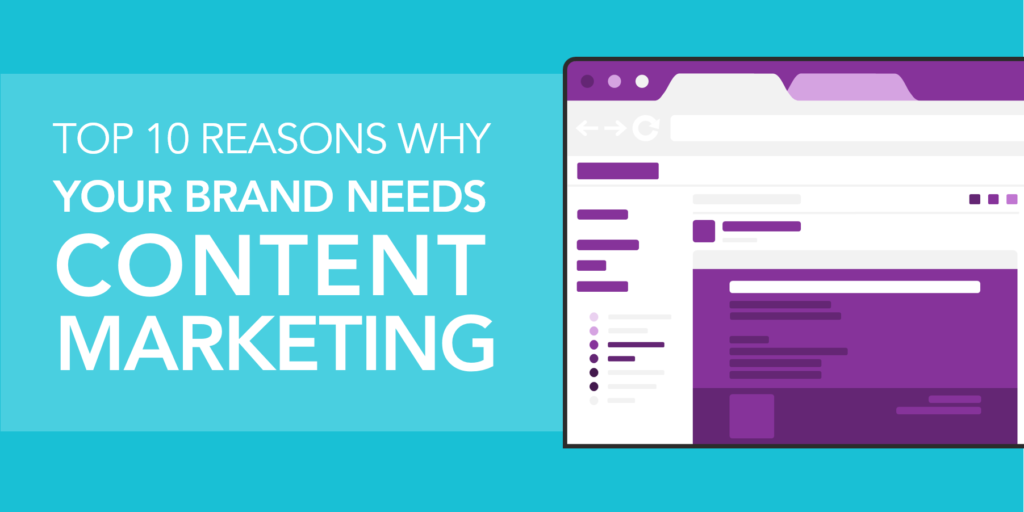The vast majority (86 percent) of B2C brands will use Content Marketing to connect with target audiences this year, with three-fourths of them planning on increasing their Content Marketing spend in the future. But, only about a third of those brands classified their Content Marketing as mature (25 percent) or sophisticated (9 percent).
Related – Content Marketing 101: The Ultimate Collection of Content Marketing Statistics
If your brand isn’t using Content Marketing (or needs help growing your current efforts), our latest infographic is for you. It’s filled with stats to you get motivated to start leveraging content to reach target audiences.
[Infographic]: Top 10 Reasons Why Your Brand Needs Content Marketing
Need help with your Content Marketing campaigns? Contact Mindstream Media Group to see how our Content Marketing solution connects brands with the right audiences at the right times.
Want to learn more about Content Marketing? Check out our Content Marketing 101 series and subscribe to our blog while you’re there to get the latest updates delivered right to your inbox.
![]()
Recapping the Top 10 Reasons Your Brand Needs Content Marketing
- People spend more time online than with any other media, giving brands plenty of opportunities to connect with digital audiences.
- Internet audiences see so much content every day it’s easy to get lost in the noise. Content Marketing helps break through the clutter.
- Most companies have already implemented Content Marketing and have plans to increase their investment.
- The good news for brands who haven’t kicked off Content Marketing efforts is that most other brands are still getting the hang of it so there’s still time to catch up.
- Brands who commit to implementing Content Marketing campaigns are seeing more success as they mature.
- Content Marketing efforts impact consumer action throughout the buying journey, especially top-of-the-funnel activity.
- The more content a brand produces, the more impact those efforts have on business goals like generating leads.
- The average blog post is getting longer, which means they take longer to write. But, longer blog posts yield the most success.
- Consumers expect content that’s specific to their needs and wants throughout the Buying Journey. It’s up to brands to deliver. (Download our template to learn how to create buyer personas.)
- Most brands lack the in-house talent to create long-form, custom content to move the needle on Content Marketing campaigns.

![[Infographic]: Top 10 Reasons Why Your Brand Needs Content Marketing](https://mindstreammediagroup.com/wp-content/uploads/2018/02/Content-Marketing-Infographic-Header-Image.png)


![[Infographic]: 5 Ways to Target Digital Display Campaigns Based on Consumer Intent](https://mindstreammediagroup.com/wp-content/uploads/2017/12/Display-infographic-featured-image.png)

![[Infographic]: The Consumer Buying Journey for Multi-Location Brands](https://mindstreammediagroup.com/wp-content/uploads/2017/11/Consumer-Buying-Journey-for-Multi-location-Brands-Infographic-Featured-Image.png)

![[Guide]: 3 Strategies to Help Multi-location Brands Connect with Local Consumers](https://mindstreammediagroup.com/wp-content/uploads/2017/11/Marketing-Strategy-for-Multi-location-brands-featured-image-3.jpg)


![[Guide]: 6 tips to unwrap the holiday season consumer buying journey](https://mindstreammediagroup.com/wp-content/uploads/2017/08/retail-stat-featured-image.png)

![[Guide]: 3 Ways to Boost your Online Advertising with Geo-fencing](https://mindstreammediagroup.com/wp-content/uploads/2017/06/Digital-Marketing-Playbook-header-image.jpg)
